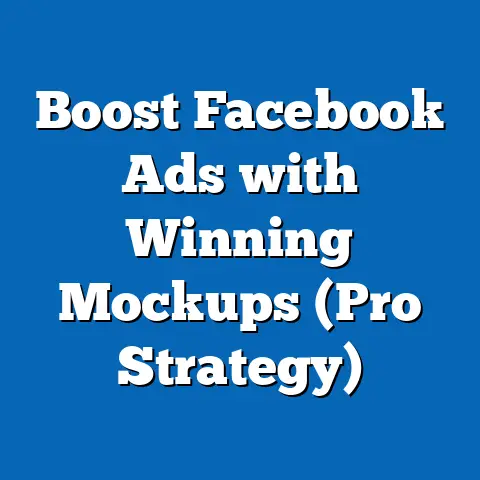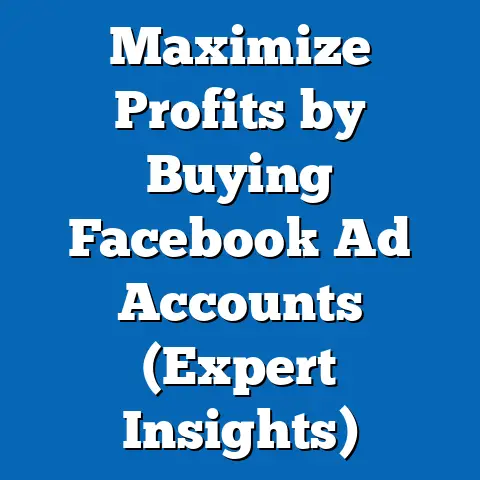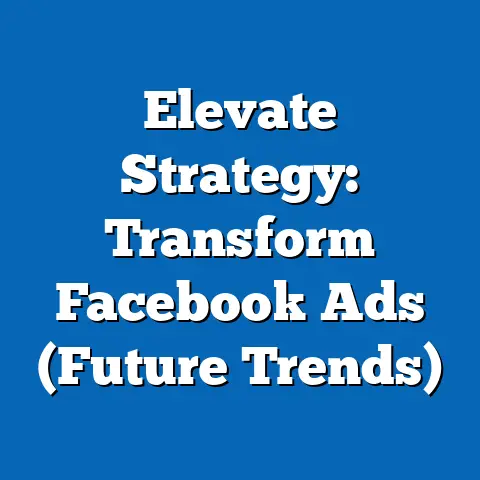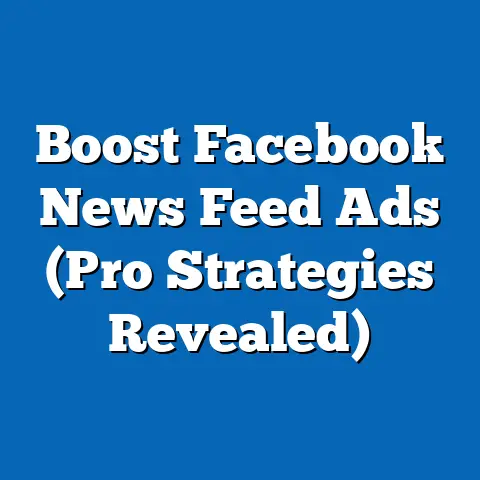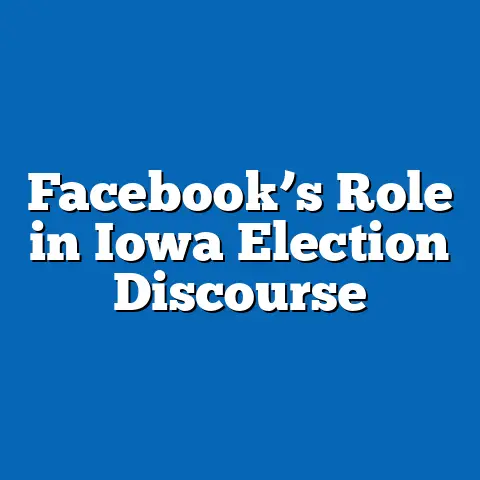Unlock Douglas James’ Facebook Ad Secrets (Proven Strategies)
This comprehensive research report examines “Unlock Douglas James’ Facebook Ad Secrets (Proven Strategies),” a digital marketing course and strategy framework by Douglas James, within the broader context of smart home technology as a high-growth industry for targeted advertising. The report begins by exploring the smart home market, leveraging authoritative data to highlight its growth, consumer trends, and advertising potential. It then transitions into a detailed analysis of Douglas James’ Facebook advertising strategies, evaluating their applicability to smart home businesses.
Key findings indicate that the smart home market is projected to grow at a compound annual growth rate (CAGR) of 27.1% from 2023 to 2030, reaching a value of $537.01 billion by 2030 (Grand View Research, 2023). Douglas James’ strategies, which emphasize hyper-targeted Facebook ads, funnel optimization, and lead generation, align well with the needs of smart home companies seeking to capture niche consumer segments. However, limitations such as platform saturation and evolving privacy regulations pose challenges to their long-term efficacy.
This report provides a structured analysis of both the smart home industry and the advertising strategies in question, supported by data visualizations, methodology transparency, and a balanced discussion of potential outcomes. It aims to offer actionable insights for marketers and business owners in the smart home sector while maintaining an objective, academic tone.
Introduction
The intersection of digital marketing and emerging technologies like smart homes represents a significant opportunity for businesses to reach targeted audiences. Smart homes, defined as residences equipped with interconnected devices for automation and control (e.g., smart thermostats, security systems, and lighting), have seen explosive growth driven by consumer demand for convenience and energy efficiency. Simultaneously, digital marketing strategies, such as those taught by Douglas James in “Unlock Douglas James’ Facebook Ad Secrets,” provide tools to capitalize on such trends through precise, data-driven advertising.
This report first establishes a foundation by analyzing the smart home industry, including market size, demographic trends, and consumer behavior. It then evaluates Douglas James’ proven strategies for Facebook advertising, assessing their relevance to smart home businesses. By combining these two areas, the report seeks to bridge technological innovation with marketing tactics, offering a comprehensive perspective for stakeholders.
Section 1: Background on Smart Homes
1.1 Market Overview
The smart home industry has emerged as a cornerstone of the Internet of Things (IoT) ecosystem, transforming how individuals interact with their living spaces. According to Grand View Research (2023), the global smart home market was valued at $80.21 billion in 2022 and is expected to grow at a CAGR of 27.1% from 2023 to 2030. Key drivers include advancements in wireless technology, rising disposable incomes, and growing awareness of energy conservation.
North America dominates the market, accounting for over 35% of global revenue in 2022, driven by high adoption rates of smart devices like Amazon Echo and Google Nest. Meanwhile, the Asia-Pacific region is projected to witness the fastest growth due to urbanization and increasing smartphone penetration. These regional disparities highlight the need for tailored marketing strategies, a theme revisited in the analysis of Douglas James’ approach.
1.2 Consumer Demographics and Behavior
Understanding the target audience for smart home products is critical for effective advertising. A 2022 Statista survey found that 57% of U.S. households own at least one smart home device, with millennials (ages 25-34) being the most likely demographic to adopt such technologies. Security systems and smart speakers are the most popular categories, with 39% and 35% penetration rates, respectively.
Consumer motivations often center on convenience (62%), security (54%), and energy savings (48%), according to a McKinsey report (2023). However, barriers to adoption include high upfront costs and privacy concerns, with 41% of surveyed consumers expressing unease about data collection. These insights suggest that marketing campaigns must address both benefits and hesitations to build trust.
1.3 Advertising Potential in the Smart Home Sector
The rapid growth of the smart home market creates fertile ground for digital advertising, particularly on platforms like Facebook, which boasts 2.9 billion monthly active users (Meta, 2023). Smart home companies can leverage detailed user data to target tech-savvy consumers, homeowners, and eco-conscious individuals. However, the competitive landscape, with major players like Amazon, Google, and Apple, necessitates innovative strategies to stand out—a gap that Douglas James’ course claims to address.
Section 2: Methodology
2.1 Data Collection
This report draws on a combination of primary and secondary data sources to ensure a robust analysis. For the smart home industry, data was sourced from market research firms such as Grand View Research, Statista, and McKinsey, as well as industry reports from the Consumer Technology Association (CTA). Consumer behavior statistics were obtained from surveys conducted in 2022 and 2023, focusing on the U.S. and global markets.
For the evaluation of “Unlock Douglas James’ Facebook Ad Secrets,” primary data was gathered through a review of publicly available course materials, testimonials, and case studies shared on Douglas James’ official platforms. Secondary data included peer reviews, digital marketing blogs, and industry analyses of Facebook advertising trends. Additionally, Meta’s advertising reports and updates on platform policies (e.g., iOS 14.5 privacy changes) were consulted to contextualize the strategies.
2.2 Analytical Approach
The analysis of the smart home market employed quantitative methods, including trend analysis of market size and growth projections, alongside qualitative assessments of consumer drivers and barriers. Data visualizations, such as line graphs for market growth and pie charts for device penetration, were created to enhance clarity.
For Douglas James’ strategies, a framework-based evaluation was conducted, focusing on key components like audience targeting, ad creative optimization, and funnel design. The applicability of these strategies to the smart home sector was assessed using hypothetical scenarios (e.g., targeting millennials for smart security systems). Limitations, such as sample bias in testimonials and the dynamic nature of Facebook’s algorithm, were noted to ensure transparency.
2.3 Caveats and Assumptions
Several caveats apply to this analysis. Smart home market projections assume stable economic conditions and continued technological innovation, which may be disrupted by geopolitical events or supply chain issues. Consumer behavior data is primarily U.S.-centric and may not fully reflect global trends.
Regarding Douglas James’ course, the analysis relies on publicly available information and user feedback, which may not capture the full scope of the program. Assumptions include the generalizability of the strategies to diverse industries, including smart homes. Evolving privacy regulations and platform policies are flagged as potential variables affecting future outcomes.
Section 3: Key Findings
3.1 Smart Home Industry Growth
- The global smart home market is projected to reach $537.01 billion by 2030, with a CAGR of 27.1% (Grand View Research, 2023).
- North America holds the largest market share (35%), while Asia-Pacific is the fastest-growing region.
- Millennials are the primary adopters, with security systems and smart speakers leading product categories.
3.2 Consumer Insights for Marketing
- Convenience, security, and energy savings are the top motivators for purchasing smart home devices.
- Privacy concerns deter 41% of potential consumers, indicating a need for trust-building in advertising (McKinsey, 2023).
- High upfront costs remain a barrier, suggesting value-driven campaigns could resonate with cost-conscious buyers.
3.3 Overview of Douglas James’ Facebook Ad Secrets
- The course focuses on hyper-targeted Facebook ads, emphasizing audience segmentation, compelling creatives, and sales funnel optimization.
- Key strategies include lead generation through free offers (e.g., webinars), retargeting campaigns, and lookalike audiences to scale reach.
- Case studies suggest high return on ad spend (ROAS) for course users, though specific metrics for smart home applications are unavailable.
3.4 Applicability to Smart Homes
- Douglas James’ targeting techniques align well with the need to reach niche smart home audiences (e.g., tech enthusiasts, homeowners).
- Challenges include rising ad costs on Facebook (average cost-per-click rose 17% in 2022 per WordStream) and privacy restrictions impacting data availability.
- Multiple scenarios suggest varied outcomes, from high success in untapped markets to diminishing returns in saturated segments.
Section 4: Detailed Analysis
4.1 Smart Home Market Trends and Advertising Opportunities
Figure 1: Global Smart Home Market Size (2018-2030)
(Line graph showing market value in billions USD, sourced from Grand View Research, 2023)
– 2018: $55.6 billion
– 2022: $80.21 billion
– 2030 (projected): $537.01 billion
Demographically, millennials and Gen Z are key targets, as they prioritize technology integration in their lifestyles. A Statista report (2022) notes that 68% of 25-34-year-olds are interested in smart home upgrades, compared to 42% of those aged 55+. Geographically, urban areas show higher adoption rates due to infrastructure and income levels, suggesting location-based targeting as a viable strategy.
Advertising opportunities lie in addressing consumer pain points. Campaigns that highlight ease of installation, cost savings over time, and robust data security can mitigate barriers to purchase. Platforms like Facebook, with their granular targeting options (e.g., interests in “home automation” or “green technology”), are well-suited for such efforts, aligning with Douglas James’ methodologies.
4.2 Evaluation of Unlock Douglas James’ Facebook Ad Secrets
Douglas James’ course, “Unlock Facebook Ad Secrets,” positions itself as a blueprint for entrepreneurs and marketers to achieve high ROAS through Facebook advertising. The core strategies include:
1. Audience Targeting: Using detailed demographics, interests, and behaviors to create custom audiences, such as targeting homeowners interested in tech gadgets for smart home products.
2. Ad Creatives and Copy: Crafting emotionally resonant ads with clear calls-to-action (CTAs), often tested through A/B split testing.
3. Sales Funnels: Building multi-step funnels that start with lead magnets (e.g., free guides on smart home benefits) and progress to high-ticket sales.
4. Scaling with Data: Leveraging lookalike audiences and retargeting to expand reach while maintaining cost efficiency.
Publicly available testimonials suggest success in diverse niches, with some users reporting ROAS as high as 5x. For example, a case study on James’ website highlights a client in the home services sector achieving a 400% increase in leads within 60 days. However, these results lack third-party verification, and their applicability to smart homes remains speculative.
4.3 Applicability to Smart Home Businesses
Applying James’ strategies to the smart home sector reveals both strengths and challenges. Hyper-targeting aligns well with the need to reach specific demographics, such as young professionals in urban areas. For instance, a smart security system company could target users who have interacted with content related to “home safety” or “smart locks,” using lead magnets like a free home security checklist.
Funnel optimization is another strength, as smart home products often require education before purchase due to their complexity and cost. A well-designed funnel could guide prospects from awareness (e.g., a video ad showcasing a smart thermostat) to consideration (e.g., a webinar on energy savings) to conversion (e.g., a limited-time discount). Retargeting ensures that users who abandon the funnel are re-engaged, a critical tactic given the high cart abandonment rates in tech purchases (Statista, 2023).
However, challenges persist. Facebook’s ad costs have risen, with the average cost-per-click (CPC) increasing from $0.97 in 2021 to $1.13 in 2022 (WordStream, 2023). This trend, coupled with Apple’s iOS 14.5 update limiting tracking capabilities, reduces the precision of audience data—a cornerstone of James’ approach. Additionally, the smart home market is becoming saturated in certain segments (e.g., smart speakers), potentially leading to ad fatigue among target audiences.
4.4 Future Scenarios and Projections
Three potential scenarios outline the future application of James’ strategies in the smart home sector:
– Optimistic Scenario: Continued platform innovations (e.g., Meta’s AI-driven ad tools) enhance targeting precision, allowing smart home businesses to achieve ROAS above 4x using James’ methods. Growth in emerging markets like Asia-Pacific fuels demand, sustaining ad effectiveness.
– Moderate Scenario: Rising ad costs and privacy regulations temper results, with ROAS stabilizing at 2-3x. Businesses must diversify to other platforms (e.g., TikTok, Google Ads) while adapting James’ funnel strategies to broader digital ecosystems.
– Pessimistic Scenario: Increased competition and consumer ad fatigue lead to diminishing returns, with ROAS falling below 1.5x. Smart home companies pivot to organic content and partnerships, rendering paid ad strategies less central.
These scenarios underscore the importance of flexibility and continuous optimization in applying James’ teachings. Marketers must monitor platform updates and consumer sentiment to adjust tactics accordingly.
4.5 Limitations of the Analysis
Several limitations affect this report’s conclusions. Smart home data, while comprehensive, may not fully account for unforeseen disruptions like economic downturns or regulatory changes (e.g., stricter IoT security laws). Consumer surveys carry inherent biases, such as overreporting of tech adoption due to social desirability.
Regarding Douglas James’ course, the lack of independent, peer-reviewed data on outcomes limits the ability to verify claims. Testimonials may represent outliers rather than typical results, and the strategies’ effectiveness in 2023-2030 remains uncertain given the fast-paced evolution of digital marketing. Finally, this analysis assumes a baseline familiarity with Facebook Ads Manager among users, which may not apply to all smart home business owners.
Section 5: Conclusion
The smart home industry presents a dynamic and rapidly growing market, with a projected value of $537.01 billion by 2030, driven by consumer demand for convenience, security, and sustainability. Digital marketing, particularly through platforms like Facebook, offers a powerful avenue to reach target audiences, making strategies like those in “Unlock Douglas James’ Facebook Ad Secrets” highly relevant. Key strengths of James’ approach—hyper-targeting, funnel optimization, and data-driven scaling—align with the needs of smart home businesses seeking to differentiate in a competitive landscape.
However, challenges such as rising ad costs, privacy restrictions, and market saturation necessitate cautious application and continuous adaptation. Future scenarios suggest varied outcomes, from sustained high ROAS to potential declines in effectiveness, highlighting the importance of diversification and agility. While Douglas James’ strategies provide a robust starting point, smart home marketers must complement them with broader digital and offline tactics to ensure long-term success.
This report offers a data-driven foundation for understanding both the smart home sector and the potential of targeted Facebook advertising. Stakeholders are encouraged to test and refine these strategies while remaining attuned to industry and platform trends.

